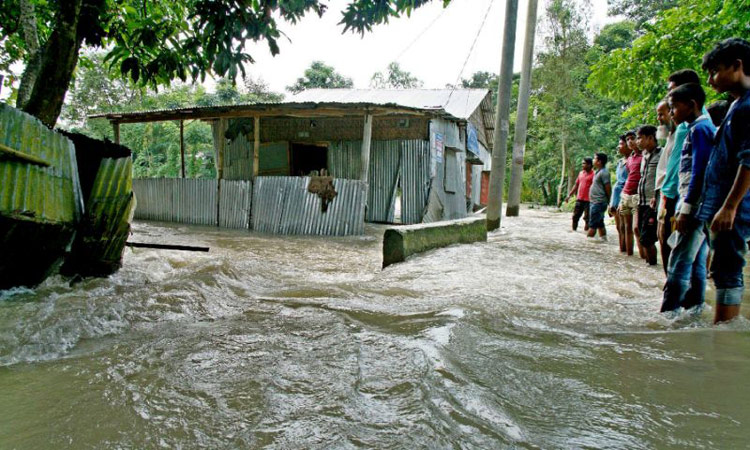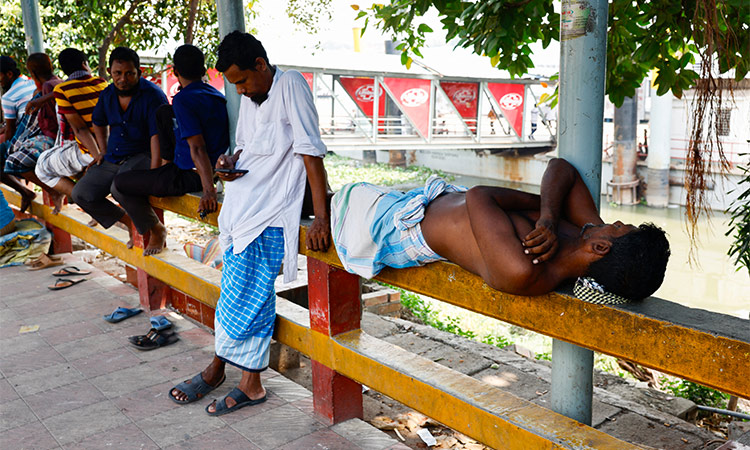Climate change threatens one in three Bangladeshi children

Monsoon rains frequently cause flooding in Bangladesh, the problem has been exacerbated by climate change. File photo/ AFP
Nearly one in three children in Bangladesh are at risk from cyclones, flooding and other climate change-linked disasters, the United Nations warned on Friday, urging more help for one of the world’s worst hit countries.
More than 19 million children live in the most disaster-prone districts of low-lying Bangladesh, according to a new report from the UN children’s agency UNICEF.
In addition, longer-term changes such as rising sea levels are pushing families deeper into poverty and forcing some from their homes, disrupting children’s education and access to health services, UNICEF said.
“Children who miss out on good nutrition or on education, who are uprooted from their homes, or who are forced into exploitative labour, will fail to fulfil their potential as citizens,” said the author of the report, Simon Ingram.
The call comes weeks after schoolchildren around the world walked out of classes to protest against global government inaction on climate change.
Global temperatures are on course to rise by 3 degrees to 5 degrees Celsius (5.4 degrees to 9 degrees Fahrenheit) this century, far overshooting a global target of limiting the increase to 2C or less, the UN World Meteorological Organization says.
That is bringing growing risks from extreme weather - including worsening droughts, floods, fires and storms - as well as threats of worsening hunger, poverty and water shortages, scientists say.
Bangladesh ranked ninth in the Global Climate Risk Index 2019, which said it was the seventh worst hit by climate change between 1998 and 2017, with 37 million people affected.
UNICEF said Bangladesh had already done much to reduce the exposure of poorer communities to cyclones and other threats, notably through the construction of shelters.
But it called for more focus on the specific needs of children threatened by the effects of climate change, including food shortages and increased migration to cities as flooding and drought make some rural areas uninhabitable.
That should include making schools and health facilities in flood-prone areas more resilient and introducing stronger measures to protect children affected by climate-induced disasters against exploitation and abuse, said Ingram.
Nurul Qadir, a senior official at Bangladesh’s Ministry of Environment, Forest and Climate Change, told the Thomson Reuters Foundation the government was already addressing the issues raised in the report.
“Right now, we are going to schools across the country to make children aware about climate change and how it can be tackled,” he said.
The UNICEF study found 12 million children in Bangladesh live near rivers that regularly burst their banks. Another 4.5 million live in coastal areas vulnerable to cyclones and 3 million are at risk from drought, it said.
These risk factors are forcing people from rural areas into cities, where children are at greater risk of being pushed into forced labour or early marriage.
“They face danger and deprivation in the cities, as well as pressure to go out to work despite the risk of exploitation and abuse,” said UNICEF Bangladesh representative Edouard Beigbeder.
Reuters







